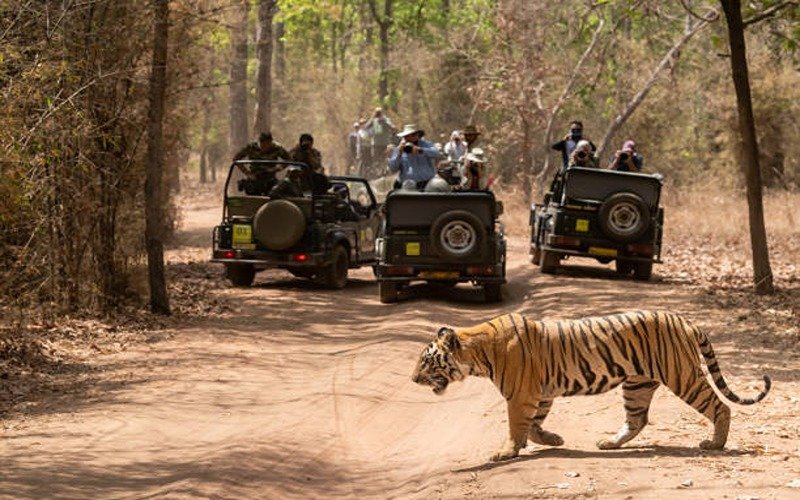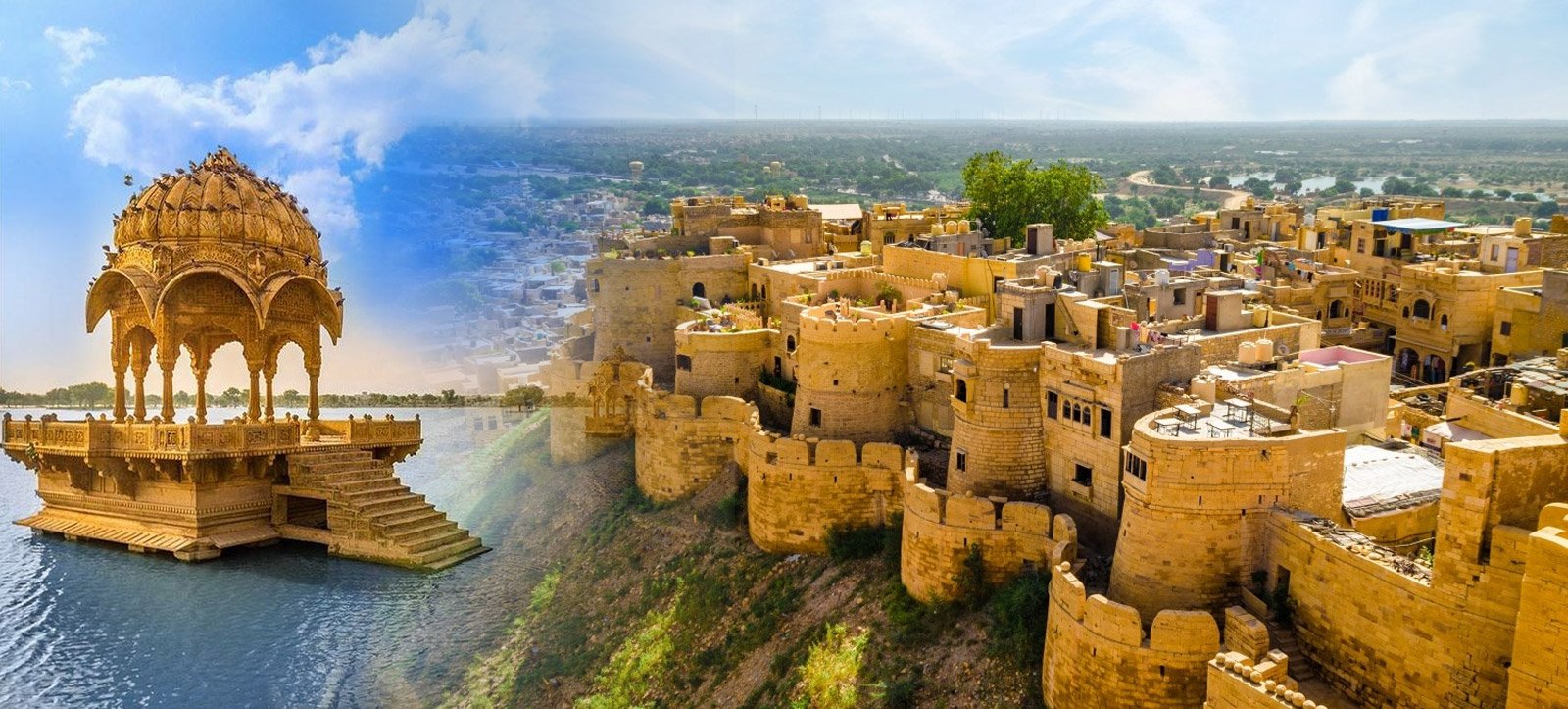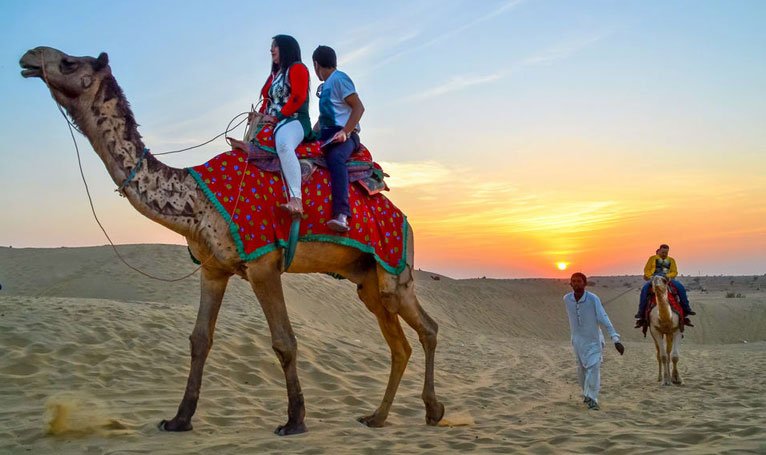When one thinks of Rajasthan, what often comes to mind are its regal palaces, golden deserts, and vibrant festivals. While these elements truly define the state’s rich heritage, there’s another side to Rajasthan that remains relatively unexplored — its diverse and thriving wildlife. Tucked between centuries-old forts and the vast Thar Desert are some of India’s most remarkable wildlife sanctuaries and national parks. This lesser-known aspect of Rajasthan is gaining quiet attention, especially among discerning travelers who explore the state through curated experiences such as the Rajasthan Wildlife and Heritage Tour.
Why Rajasthan Deserves a Spot in India’s Top Wildlife Destinations
Rajasthan is often overshadowed by states like Madhya Pradesh or Assam when it comes to wildlife tourism. However, the state offers an ecological diversity that ranges from dry deciduous forests to grasslands, semi-arid regions, and wetlands. Home to iconic species like the Bengal tiger, leopard, desert fox, and over 450 species of birds, Rajasthan presents an impressive case for being a top-tier wildlife destination.
Unlike many other Indian states, Rajasthan blends wilderness with heritage. A wildlife excursion here can effortlessly transition into a cultural exploration. For instance, a visit to Ranthambore can include a tiger safari in the morning and a guided tour of Ranthambore Fort by afternoon. This fusion of heritage and habitat is what makes Rajasthan truly unique in the Indian tourism landscape.
Key Wildlife Reserves That Make Rajasthan Exceptional
Rajasthan is home to some of India’s most renowned national parks and sanctuaries, each offering a distinct wildlife experience:
- Ranthambore National Park: Located near the town of Sawai Madhopur, this park is perhaps the most famous in the state. It’s a premier location for spotting the elusive Bengal tiger and is known for its picturesque setting with lakes, ancient ruins, and rugged terrains.
- Sariska Tiger Reserve: Nestled in the Aravalli Hills, Sariska offers a more rustic and less commercialized alternative to Ranthambore. Leopards, hyenas, and various bird species call it home.
- Keoladeo National Park (Bharatpur): Recognized as a UNESCO World Heritage Site, this park is a paradise for bird watchers. From Siberian cranes to painted storks, the wetland ecosystem supports a range of migratory and native birds.
- Desert National Park: This park, located near Jaisalmer, presents a unique ecosystem. It houses the endangered Great Indian Bustard and other desert-dwelling species like the blackbuck and Indian fox.
Each of these parks showcases a different face of Rajasthan’s biodiversity and makes a strong case for the state’s inclusion in India’s top wildlife circuits.
How Heritage Enhances the Wildlife Experience
What sets Rajasthan apart is not just the presence of these parks, but the way wildlife integrates with the state’s cultural and architectural identity. The old hunting lodges, now converted into eco-resorts or luxury stays, offer an immersive experience that is as much about the land’s history as its fauna.
Even the safari routes in places like Ranthambore take visitors past medieval ruins, banyan tree groves, and ancient temples, offering a surreal blend of natural and man-made wonders. This adds depth to the journey and makes it more than just an observational tour.
For travelers seeking such rich experiences, a Travel agency in Udaipur like India Journey can offer curated packages that blend wildlife, history, and local interactions seamlessly. The region’s central location allows convenient access to key parks and heritage cities, making it an ideal starting point.
The Role of Sustainable Tourism in Rajasthan’s Wildlife Growth
Sustainable tourism is a growing priority across India, and Rajasthan is taking commendable steps in this direction. Many lodges and tour operators now adhere to eco-friendly practices like waste management, water conservation, and ethical wildlife viewing. Community-based tourism models are also emerging, providing local employment and involving village communities in conservation efforts.
By choosing responsible travel options, tourists can contribute to preserving these delicate ecosystems. This not only ensures a positive impact on wildlife but also supports local livelihoods and traditions.
The Ideal Itinerary for a Balanced Wildlife and Cultural Tour
For those wishing to explore both the wild and royal faces of Rajasthan, an itinerary like the Classic Rajasthan Tour offers the perfect balance. This route typically includes visits to Jaipur, Udaipur, Jodhpur, and Jaisalmer, along with wildlife excursions to Ranthambore or Sariska. Such a trip allows visitors to experience architectural wonders, bustling bazaars, and serene nature trails — all within a couple of weeks.
The Classic Rajasthan Tour often includes guided safaris, heritage walks, rural stays, and opportunities to witness local crafts and cuisines. It’s ideal for both first-time visitors and seasoned explorers looking for something beyond the ordinary.
Is Rajasthan Still Underrated?
The short answer: yes — but not for long. While Rajasthan is gaining popularity among international and domestic travelers for its wildlife offerings, it still lacks the mainstream attention enjoyed by other wildlife hubs. This presents a golden opportunity for travelers to explore its parks and reserves before they become crowded.
The relatively low tourist footfall in some parks ensures a more peaceful and personal wildlife experience. Coupled with Rajasthan’s strong hospitality infrastructure and a growing emphasis on sustainability, it is well-positioned to become a leader in India’s wildlife tourism scene.
Final Thoughts
Rajasthan’s wildlife is as vivid and majestic as its history. From tiger sightings to desert treks, from birdwatching to cultural immersion, the state offers an incredibly diverse palette of experiences. It’s not just about where the wild things are — it’s about how they coexist with centuries of culture and tradition.
So, is Rajasthan the underrated gem of Indian wildlife tourism? Without a doubt. And now is the perfect time to explore it — before the rest of the world catches on.




